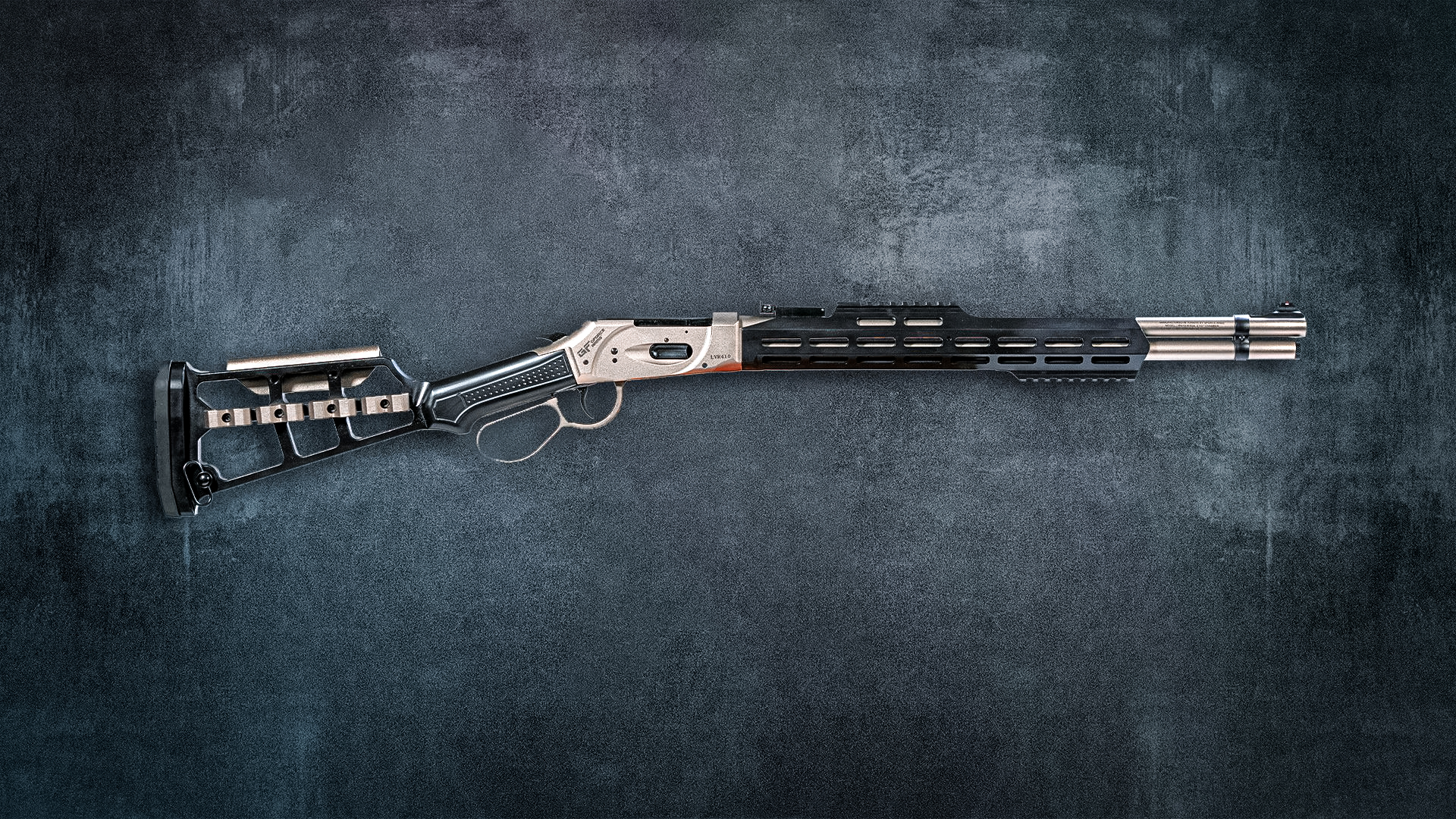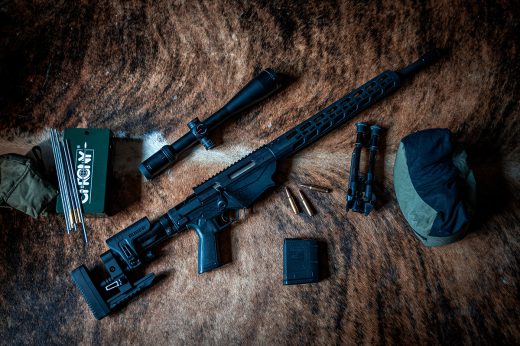The shotgun is a firearms icon, featured in movies, video games, and your grandfather’s closet as a powerhouse weapon. It is usually a pump action or double-barrel, with the rarer lever action shotgun occasionally making an appearance.
Barring occasional and sometimes iconic appearances in movies and video games, people would be forgiven for thinking that lever action shotguns are a fantasy. However, not only do lever action shotguns exist, but so do bolt action shotguns — but those are also rare, especially compared to the pump action.
The short answer to why doesn’t anyone make a lever action shotgun is, they do, but it sure as hell isn’t popular, and anything bigger than a .410 is usually a reproduction of a gun from the century before last. But why did the lever action never take off for gauges the way pumps did and the way levers did for rifles?

GOOD GEAR – Embody the Ethos of the Quiet Professional With BRCC’s Silencer Smooth Roast
The First Lever Action Shotgun
John M. Browning, the most prolific and influential gun designer in history, knew that the pump action would be better suited to the variable shell lengths that shotguns had to handle — but in the late 1880s, he still worked for Winchester. And Winchester’s reputation was completely tied up in being a lever gun company. It was their identity,
So, they pushed Browning to develop a lever action repeating shotgun. He did so, and produced the Model 1887 in 12- and 10-gauge, the first repeating shotgun that saw any kind of commercial success, though it didn’t make the splash Winchester had hoped it would.
Browning was vindicated by history. For a long time, the most successful repeating shotguns were pumps, and that can still be said today.

Winchester eventually recognized its mistake and released the Browning-designed pump action Model 1897. A few years later, the lever action M1887 got an update so it could handle the new smokeless powder shotshells and was re-released as the Model 1901. But the update was only offered in 10-gauge with a 32-inch barrel so as not to compete with the 12-gauge M1897 pump gun.
The M1887 and M1901 worked similarly to most lever action rifles and shared a perfectly sound design. It had a downward-sweeping lever that released a new shell from the tubular magazine, elevated it to the chamber, and loaded it on the closing motion of the lever.
The difference was that a good chunk of the action follows the lever out of the receiver of the shotgun. It also lacks a dedicated loading gate, found on Winchester’s rifles, meaning that the ejection port is the same as the loading port on the bottom of the receiver. This is just one of the Model 1887’s many issues.

The shotgun could not be easily reloaded on a partially loaded magazine since you needed to open the action to access the magazine, which would also let a shotgun shell jump free of the magazine tube, blocking the loading gate.
Also, the action is very easy to short-stroke, which can cause a failure to chamber the next round, a shell getting caught halfway, or a problematic double feed. When any of these issues occur, the shooter usually has to slam the lever forward and then slam it shut in one firm motion.
Nearly every modern copy of the lever action shotgun has inherited these issues. Even if you’re shooting the fairly modern Chiappa T-Series, the gun will still have much of the associated wonk because of the design.
Still, with all that said, the M1887 was the first commercial shotgun that allowed people to fire more than two shotgun shells without reloading, and Winchester sold plenty of them before dropping the company’s first pump gun.
RELATED – Rifle Backpack Guide: Buy One That Doesn’t Suck
Cinematic Redemption and New Life
It seemed like the Winchester Model 1887 and Model 1901 would fade deep into history as “failed but interesting curiosities,” like the Pedersen rifle, the M50 Reising submachine gun, and the G11 assault rifle.
Hollywood had different plans. In 1972, Paul Newman wielded the Model 1901 in The Life and Times of Judge Roy Bean, followed shortly by Bill McKinney in Thunderbolt and Lightfoot in 1974.
It wasn’t until 1991 that the lever action shotgun made its most famous appearance in the hands of the Cyberdyne Systems T-800, Model 101, played by Arnold Schwarzenegger in Terminator 2: Judgment Day.
James Cameron gave the world a shotgun that was a new level of cool. The movie gun was cut down into a “mare’s leg” format and in some scenes featured an enlarged lever ring with the trigger guard removed for badass one-handed spin-cocking while riding a motorcycle — like John Wayne used to do on horseback with his rifle. Discerning movie-watchers will notice the lever alternates between a large loop and a regular-sized loop throughout the movie.

Suddenly, representations of the Models 1887 and 1901 were popping up everywhere on the silver screen. The ’90s saw a variety of takes show up in various action movies, including a version that featured an attached M203 grenade launcher in The Long Kiss Goodnight. It had caught the public’s imagination.
Games like Call of Duty: Black Ops also featured the Model 1887 as a deliberate callback, while others like Far Cry 3: Blood Dragon were more tongue-in-cheek in their aping of Terminator 2.
The lever action’s appearances in film and video games caused a major resurgence in interest among gun owners for a chance to own something close to the real thing.

Most modern lever action shotguns used direct copies of the 1887 action, including the Chiappa T-Series. Others, like the Henry Lever Action Axe .410, took advantage of big-bore lever action rifle patterns to load .410 shells — they work just like their other lever guns, and include a loading gate and side ejector.
However, like the original Model 1887, the new renditions suffered many of the same issues as the original, relegating them to expensive curiosity pieces and novelties.
These days, you mostly see lever action shotguns in action during Cowboy Action Shooting events, where they stand alongside other firearms from the late 1800s. You can still find some new production lever action shotguns too — admittedly, a lot of them will be chambered in .410, because it’s not too tough for lever action rifle companies such as Henry Repeating Arms, GForce Arms, and Rock Island Armory to take a frame made for a .45-70 and put a smoothbore .410 barrel on it.
A few companies, such as Century Arms and Chiappa Firearms, make new production Model 1887 12-gauge replicas.

But why have there been no new lever action shotgun designs in more than a century? Simply because there is no advantage that a more complicated lever action can offer over a refined pump action design — and people have come to depend on the pump shotgun and are used to it. It really is that simple. In fact, a lever action shotgun in 12-gauge requires a significantly larger receiver than even the biggest-bore lever action rifles.
GOOD GEAR – Explore the Unknown With BRCC’s Beyond Black Roast
Browning Was Right
The lever action shotgun is a pretty badass and ultra-flashy way to send shot downrange. However, there isn’t going to be a renaissance of the lever action shotgun any time soon.

Although Winchester insisted on keeping the lever action shotgun as part of their brand identity, Browning saw the inherent flaws with the system and he was right in the end.
However, for a moment in time, the Winchester 1887 was a legend, a lever action shotgun that was decidedly cool. Though granted, it was in a movie and not on any firing range or in a hunting blind.
READ NEXT – 6.8 Western: What the .270 WSM Should Have Been










Comments